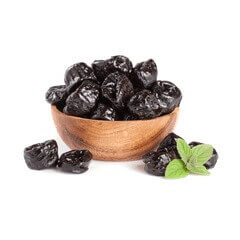Brown Super Kernal Basmati Rice
- Home
- Rice

Brown Super Kernal Basmati Rice
Brown rice has been shown to provide more nutrients and be lower on the glycemic index. Brown basmati rice can be a more healthful choice for those with diabetes, celiacs, or other digestive problems. Brown basmati rice contains more fiber, phosphorus, zinc, and B vitamins. This helps to reduce blood cholesterol levels while also being lower on the glycemic index than white basmati rice. Eating brown basmati rice is a step in the right direction for a healthy lifestyle.
There are a lot of dishes in the Middle East and South Asia that rely on Basmati Rice as well as other countries. This custom has been handed down for generations because of its health advantages. Some of the advantages include:
- You can eat more without overindulging or feeling hungry.
- Contains high amounts of fiber
- Fibers assist with weight loss by reducing calorie absorption.
- Bowel movements are also improved.
Basmati Rice is graded on the basis of its shape, texture, aroma, and low breakage. It should be stored in a dry, cold location away from direct sunlight to prevent color change or infestations.
Preparing Basmati Rice is a lot more complicated in each region; people prepare their rice in a unique manner to give their dishes the desired texture and flavor. Basmati rice may be prepared in a variety of ways, one of which is as follows:
- The rice is soaked with lots of water for 30 minutes to eliminate any excess starch.
- Then, you need to drain any excess water.
- Add the soaked rice to the pot with 2 cups of water, a little oil, and salt to your taste.
- Bring the mixture to a boil, covering it and lowering the heat to medium-low.
- Cook for 15 minutes. After 15 minutes, remove the lid and let the water boil off.
- Fluff the rice with a fork and you are finished.
It is critical to clean rice thoroughly in order to eliminate any dust from it. Individuals with allergies or dietary restrictions should consult with a medical professional to discover the correct quantity of Basmati rice to consume daily, if applicable. SGS, ISO 9001, and Vegan certifications have been issued for all of basmati rice varieties.










